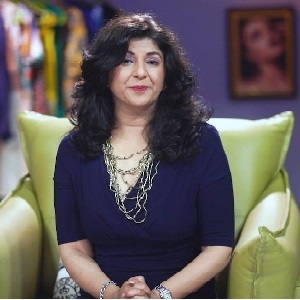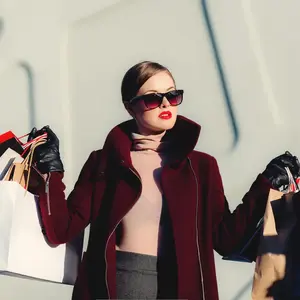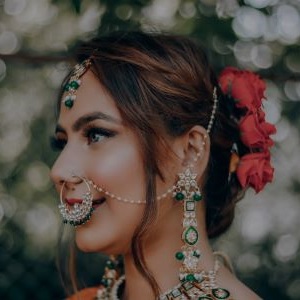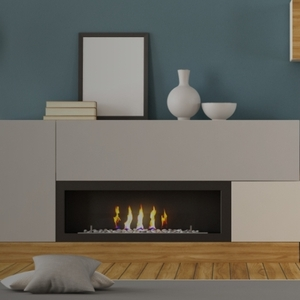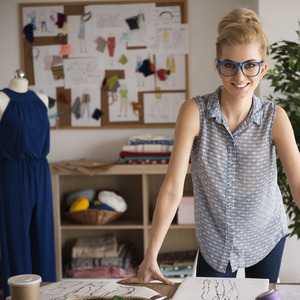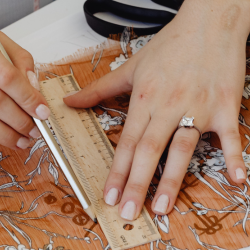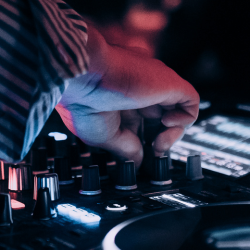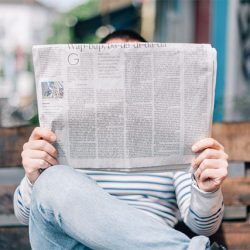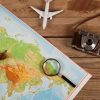Breaking into the world of fashion design takes more than just an impressive sketchbook or a strong aesthetic—it requires the ability to express your creative process clearly, communicate your inspirations, and demonstrate how your vision aligns with the brand. Whether you’re aiming for an internship, an entry-level job, or a senior designer position, your interview is your runway—this is where your personality, professionalism, and passion need to shine just as brightly as your portfolio. If you’ve completed a Fashion Design Course, your training can also serve as a solid foundation to highlight your design thinking, technical skills, and industry preparedness.
In this blog, we’ve compiled 30 essential fashion design interview questions along with smart ways to answer them. These questions will not only help you prepare for what’s commonly asked but also equip you to speak confidently about your design journey, technical skills, industry knowledge, and creative choices. Plus, you’ll find tips on how to present your portfolio effectively and leave a lasting impression during interviews.
Table Of Content
-
- 30 Fashion Design Interview Questions With Sample Answers
- Can you tell me a bit about your educational background and how it led you to fashion?
- What inspired you to pursue a career in the fashion industry?
- What do you love most about working in fashion?
- What kind of fashion work excites you the most—runway, retail, editorial, or something else?
- What kind of role are you looking for right now, and why does this position interest you?
- Where do you see yourself in the next five years in the fashion world?
- How would you describe your design style or aesthetic?
- What usually influences or inspires your designs?
- Can you walk me through your design process—from concept to final product?
- How do you choose fabrics, colors, and materials for your collections?
- How do you use color theory in your design decisions?
- What role does storytelling play in your design work?
- What design software or tools are you most comfortable using, and why?
- What experience do you have with pattern making or garment construction?
- Can you describe a project where you had to learn a new skill or tool quickly? How did you manage it?
- How do you stay updated with current trends and developments in the fashion industry?
- Are there any past or present trends you love—or think are overrated?
- Which designers, photographers, or fashion influencers do you admire or follow?
- What fashion blogs, websites, or social media platforms do you follow regularly?
- Can you name a celebrity whose style you really admire, and why?
- Tell me about the most successful project or collection you’ve worked on. What made it a success?
- What’s the most challenging project you’ve handled, and how did you overcome the obstacles?
- How has your previous work experience prepared you for this role?
- What did you enjoy most—and least—about your last job in fashion?
- How do you measure success in your work as a designer or creative?
- How would you describe your work style, especially when managing multiple projects?
- What’s your approach to handling tight deadlines or high-pressure situations?
- Can you give an example of a time when you received constructive criticism? How did you respond?
- How do you collaborate with photographers, models, or other creatives on a project?
- Have you ever had to adapt your design based on client feedback or needs? How did you approach that?
- What do you do when you’re stuck creatively or need inspiration?
- How do you incorporate sustainability or ethical practices into your design process?
- What steps do you take to ensure diversity and inclusivity in your designs or campaigns?
- What do you think sets you apart from other designers or creatives in this industry?
- Conclusion
- FAQs
- How do I prepare for a fashion design job interview?
- What skills are interviewers looking for in a fashion designer?
- What should I wear to a fashion designer interview?
- How can I showcase my portfolio effectively during an interview?
- What questions should I ask the employer in a fashion design interview?
- 30 Fashion Design Interview Questions With Sample Answers
30 Fashion Design Interview Questions with Sample Answers
Here are some questions we can ask to get a better understanding. Based on them we can come up with a conclusion.
1. Can you tell me a bit about your educational background and how it led you to fashion?
Sample Answer:
“I studied Fashion Design at XYZ Institute, where I specialized in textile design and garment construction. During college, I interned with a luxury couture brand, which helped me realize my passion for detail-oriented design and craftsmanship.”
2. What inspired you to pursue a career in the fashion industry?
“I’ve always been fascinated by how clothes tell stories and shape identities. Fashion felt like a natural medium for me to express creativity and connect with culture.”
3. What do you love most about working in fashion?
“The freedom to be expressive while solving real-world design problems excites me. I love seeing my vision come to life on the runway or in campaigns.”
4. What kind of fashion work excites you the most—runway, retail, editorial, or something else?
“Editorial fashion excites me the most because it allows me to create immersive visual narratives that blend fashion with art and storytelling.”
5. What kind of role are you looking for right now, and why does this position interest you?
“I’m looking for a role that allows me to design ready-to-wear collections while learning from industry veterans. Your brand’s focus on sustainable materials aligns with my values.”
6. Where do you see yourself in the next five years in the fashion world?
“I see myself leading a creative team, contributing to seasonal collections, and eventually launching a capsule line that champions Indian textile heritage.”
7. How would you describe your design style or aesthetic?
“My aesthetic leans toward minimalism with a strong influence of cultural motifs. I like clean silhouettes paired with rich fabric stories.”
8. What usually influences or inspires your designs?
“Travel, architecture, and street culture often influence my collections. I also draw inspiration from traditional crafts and local artisans.”
9. Can you walk me through your design process—from concept to final product?
“I start with trend research and mood boarding, then sketch ideas, create technical flats, source fabrics, and finally prototype. I also iterate based on feedback before the final collection is ready.”
10. How do you choose fabrics, colors, and materials for your collections?
“I focus on tactile quality, seasonality, and sustainability. I also look for textures and hues that align with the story I want to tell.”
11. How do you use color theory in your design decisions?
“I rely on color theory to evoke mood—using complementary or analogous schemes depending on the collection’s theme.”
12. What role does storytelling play in your design work?
“Every collection I design begins with a story—whether it’s inspired by a culture, a memory, or a cause. It shapes my silhouettes, palettes, and campaign visuals.”
13. What design software or tools are you most comfortable using, and why?
“I’m proficient in Adobe Illustrator and Photoshop for sketches and tech packs, and I use CLO 3D for virtual prototyping.”
14. What experience do you have with pattern making or garment construction?
“I’ve worked hands-on in sample rooms during internships and coursework. I can draft patterns, sew basic prototypes, and understand fit corrections.”
15. Can you describe a project where you had to learn a new skill or tool quickly? How did you manage it?
“During a freelance project, I had to learn CLO 3D in a week. I followed online tutorials and applied it in real-time to deliver a digital sample. It turned out better than expected.”
16. How do you stay updated with current trends and developments in the fashion industry?
“I follow WGSN, Vogue Runway, and attend webinars and fashion weeks online. I also keep an eye on Instagram trendsetters and Pinterest boards.”
17. Are there any past or present trends you love—or think are overrated?
“I love the gender-fluid silhouettes trending now. I think overuse of logos and fast fashion microtrends are becoming overdone.”
18. Which designers, photographers, or fashion influencers do you admire or follow?
“I admire Sabyasachi for his storytelling and Iris van Herpen for her innovation. On Instagram, I follow Diet Prada, Manish Arora, and Eva Chen.”
19. What fashion blogs, websites, or social media platforms do you follow regularly?
“I regularly check Business of Fashion, Vogue, HighSnobiety, and Pinterest boards for trend spotting.”
20. Can you name a celebrity whose style you really admire, and why?
“Zendaya. She takes bold risks and switches between edgy street style and classic glam effortlessly.”
21. Tell me about the most successful project or collection you’ve worked on. What made it a success?
“My graduation collection was selected for a local fashion week and featured in a magazine. I credit the success to cohesive storytelling and strong finishing.”
22. What’s the most challenging project you’ve handled, and how did you overcome the obstacles?
“Designing a size-inclusive line was challenging, especially in pattern grading. I consulted experts, tested multiple fittings, and learned to adapt silhouettes while staying true to my aesthetic.”
23. How has your previous work experience prepared you for this role?
“Working with retail brands helped me understand commercial viability, customer preferences, and production timelines.”
24. What did you enjoy most—and least—about your last job in fashion?
“I loved the creative brainstorming and runway prep. I found the administrative side repetitive, though I understand its importance.”
25. How do you measure success in your work as a designer or creative?
“For me, success is seeing people connect with and wear my designs confidently. It’s also about growth—each project should teach me something new.”
26. How would you describe your work style, especially when managing multiple projects?
“I’m highly organized. I use digital boards and calendars to keep track, and I thrive when collaborating with structured timelines.”
27. What’s your approach to handling tight deadlines or high-pressure situations?
“I break tasks into phases, prioritize key elements, and stay calm. I’ve learned that flexibility is as important as planning.”
28. Can you give an example of a time when you received constructive criticism? How did you respond?
“A mentor once told me my sketches lacked fabric detail. I took it as a cue to study textile rendering and improved significantly.”
29. How do you collaborate with photographers, models, or other creatives on a project?
“I believe in open dialogue. I usually create briefs and references but leave space for their interpretation—it’s more authentic that way.”
30. Have you ever had to adapt your design based on client feedback or needs? How did you approach that?
“Yes. A bridal client wanted more modest cuts mid-process. I reworked the designs with added layers and still preserved the original elegance.”
Conclusion
Preparing for a fashion design interview requires more than just creative flair—it’s about demonstrating your industry knowledge, technical skills, and unique perspective as a designer. The top 30 fashion design interview questions shared in this guide are to help you anticipate what recruiters might ask and respond with confidence.
Whether you’re just starting out or looking to land your next big opportunity, knowing how to showcase your portfolio, articulate your creative process, and express your inspirations will set you apart. Combine this with a strong understanding of what interviewers look for, thoughtful questions to ask the employer, and a polished personal presentation—and you’ll be ready to ace your next fashion design interview.
FAQS
Q1. How do I prepare for a fashion design job interview?
- Research the brand and its design philosophy.
- Practice articulating your design process.
- Be ready to walk through your portfolio confidently.
- Stay updated with current fashion trends and terminology.
Q2. What skills are interviewers looking for in a fashion designer?
- Creativity, trend awareness, sketching, pattern making, digital tools (Adobe Suite, CLO 3D), time management, and collaboration.
Q3. What should I wear to a fashion designer interview?
Wear something that reflects your personal style but is neat and appropriate for the brand’s aesthetic.
Q4. How can I showcase my portfolio effectively during an interview?
- Present both physical and digital copies.
- Highlight your thought process, mood boards, and final outcomes.
- Tailor the showcase to align with the role you’re applying for.
Q5. What questions should I ask the employer in a fashion design interview?
- What’s the brand’s creative process like?
- How does the team collaborate on new collections?
- Are there opportunities to contribute to design decisions early on?







